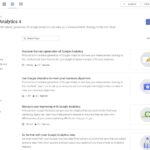Learning a new language, especially one as complex as Arabic, is a significant undertaking. The question “Can I Learn Arabic In A Year?” is common, and the answer, like with most language learning endeavors, is nuanced. While fluency in a year might be a stretch for most, significant progress is definitely achievable with the right approach. This article will explore realistic expectations for learning Arabic in a year and provide actionable advice for maximizing your learning potential.
Understanding the Challenges of Learning Arabic
Before diving into strategies, it’s crucial to acknowledge the inherent challenges of learning Arabic. These include:
- Diglossia: Arabic exists in two forms: Modern Standard Arabic (MSA), used in formal writing and media, and various spoken dialects, which differ significantly from MSA and each other. Choosing a dialect to focus on initially is essential.
- Unfamiliar Script: The Arabic script is written right-to-left and initially appears quite different from Latin-based alphabets. Mastering the alphabet and its sounds is a foundational step.
- Pronunciation: Arabic includes sounds not present in many other languages, requiring focused practice to master.
- Grammar: Arabic grammar, particularly in MSA, can be complex, with verb conjugations and noun declensions posing challenges.
Setting Realistic Goals for a Year
Fluency, defined as near-native proficiency, is unlikely in a year. However, reaching a conversational level where you can understand and participate in basic conversations is a realistic goal. This involves:
- Solid Foundational Knowledge: Mastering the alphabet, basic grammar, and a core vocabulary of common words and phrases.
- Basic Conversational Skills: Being able to introduce yourself, ask and answer simple questions, and engage in short dialogues on familiar topics.
- Comprehension Skills: Understanding simple spoken Arabic in your chosen dialect, potentially with the aid of subtitles or context.
Caption: Familiarizing yourself with the Arabic alphabet is the first step in your learning journey.
Strategies for Maximizing Learning in a Year
To make the most of your year, consider these strategies:
1. Focus on a Spoken Dialect:
Choose one dialect, such as Egyptian or Levantine, and concentrate your efforts. Learning MSA alongside a dialect can be overwhelming initially.
2. Immerse Yourself in the Language:
Surround yourself with Arabic as much as possible. Listen to Arabic music, watch movies with subtitles, and engage with Arabic speakers online or in person.
3. Prioritize Communication:
Focus on speaking from day one, even if your grammar is imperfect. Find language partners, tutors, or online platforms for conversation practice.
Caption: Engaging in regular conversation practice with a native speaker is crucial for progress.
4. Utilize Effective Resources:
Choose high-quality learning materials that align with your chosen dialect and learning style. Consider language learning apps, online courses, textbooks, and authentic Arabic content.
5. Embrace Cultural Learning:
Learning about Arab culture enhances your understanding of the language and provides valuable context. Explore Arabic music, food, customs, and traditions.
6. Consistent Effort is Key:
Dedicate time each day, even if it’s just for 30 minutes, to studying and practicing. Consistency is more important than sporadic intense sessions.
Conclusion
Learning Arabic in a year requires dedication, a strategic approach, and realistic expectations. While fluency may not be attainable in this timeframe, significant progress towards conversational proficiency is definitely possible. By focusing on a spoken dialect, immersing yourself in the language, prioritizing communication, and utilizing effective resources, you can set yourself up for success in your Arabic learning journey. Remember that consistency and a positive attitude are crucial for long-term progress. So, start learning today and experience the richness and beauty of the Arabic language.
